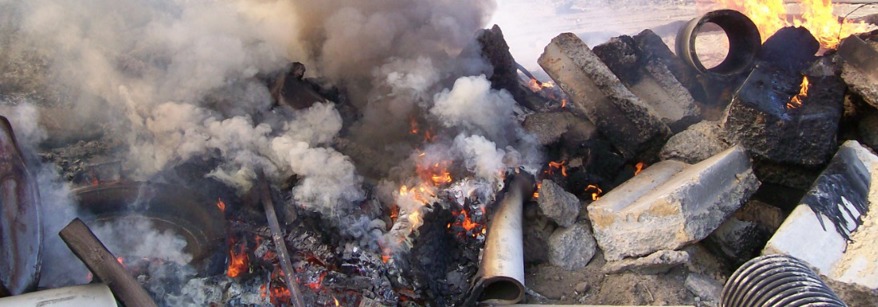Any questions relating to the Rotorua Air Quality Control Bylaw 2010, please see our Rotorua Air Quality page.
Q. What are the notification requirements surrounding the discharge of agrichemicals from aircrafts?
A. The owner/occupier or agent must notify the occupier of any adjoining properties within 200m of that agrichemical use. If an agreed form of notification has not been reached, such as an annual spray or application plan and individual notification of certain chemicals to be used, notification must be no earlier than 20 days and no later than 12 hours before the agrichemical use. This condition does not apply to agrichemical use on public land or land used for road or rail purposes. The property owner or agent acting on behalf of the property owner must advise the aerial applicator that notification has occurred before the aerial application of any agrichemical is undertaken.
Notification must include the following:
(i) The site of proposed application.
(ii) The date of proposed application.
(iii) Name and type of agrichemical to be applied.
(iv) Name, address, phone number and registration number of applicator.
Where agrichemicals are applied to land adjoining public roads and places, signs must be placed on the road boundary 24 hours before the time of application and removed by the applicator when safe for re-entry. The signs must include the following information:
(i) The agrichemical used.
(ii) The time of application.
(iii) The time for safe re-entry.
(iv) The name and contact details of the applicator (Rule 12 Air Plan).
Q. What are the notification requirements surrounding the use of agrichemicals using non-motorised hand-held techniques?
A. Notification requirements only apply to use in public places (public land, public roads or railways). Notification must be made at least one week before application by a public notice in the local newspaper and/or other recommended methods including letter drops stating:
(i) The area the agrichemical will be used.
(ii) The agrichemical to be used.
(iii) The reason for the use (e.g. weed control).
(iv) The duration of the use.
(v) The time after agrichemical use before safe re-entry.
The site of the agrichemical use or the public places beside the agrichemical use must be sign posted with the following information:
(i) The agrichemicals used.
(ii) The time of application.
(iii) The time for safe re-entry.
(iv) The name and contact details of the applicator.
The signs must remain in place until the site is safe for public re-entry (Rule 11 Air Plan).
Q. What are the notification requirements surrounding the use of agrichemicals using other techniques?
A. The owner/occupier or agent must notify the occupier of any adjoining properties within 50 metres of that agrichemical use. If an agreed form of notification has not been reached, such as an annual spray or application plan and individual notification of certain chemicals to be used, notification must be no earlier than 20 days and no later than 12 hours before the agrichemical use. Notification must include the following:
(i) The site of proposed application.
(ii) The date of proposed application.
(iii) Name and type of agrichemical to be applied.
(iv) Name, address and phone number of applicator (Rule 13 Air Plan).
Q. How can I better manage smoke produced from open burning so I do not cause a nuisance to my neighbours?
A. Dry, seasoned material should only be burned. Increased moisture content affects the heat of combustion and increases the likelihood of smoke. A week of fine weather should be allowed prior to burning. Preferably allow longer.
Fires should not be lit in winds greater than 10 knots, or in really calm conditions. 10 knot wind causes leaves and the smallest twigs to move. High winds result in the ash being more likely to be blown about, and the resulting smoke and particulate travelling further. Calm conditions are usually variable, so unexpected changes in wind direction and speed can quickly catch you out.
Where possible material to be burned should be stacked to allow plenty of airflow into the base of the fire to aid efficient burning. Avoid scraping soil into the pile.
For large fires the place of combustion should be at least 50m from any road other than a highway and 100m from any highway or dwelling house on an adjoining property or National Park boundary.
Q. What materials are prohibited from being burned in the open air?
A. The following materials must not be burnt in the open air:
(i) Chlorinated organic chemicals including but not limited to dioxins, furans, polychlorinated biphenyls (PCB).
(ii) Contaminated material from contaminated sites and buildings.
(iii) Elemental materials that can produce toxic gases, including but not limited to boron, halides, phosphorus, sulphur.
(iv) Food waste.
(v) Heavy metals including but not limited to lead, zinc, arsenic, chromium, cadmium, copper, mercury, thorium.
(vi) Material associated with the recovery of metal from insulated electrical cables.
(vii) Materials or metals used in motor vehicles.
(viii) Mineral fibres including but not limited to asbestos.
(ix) Paint and other surface protective coatings.
(x) Pathological waste excluding animal carcasses on production land.
(xi) Pesticides, pesticide waste (excluding cardboard pesticide containers).
(xii) Plastic including but not limited to polyvinylchloride (PVC), polystyrene, nylon, styrofoam.
(xiii) Tyres and other rubber.
(xiv) Treated timber or timber treatment chemicals.
(xv) Waste oil or other waste petroleum products.
Q. Do I need a permit to light an outdoor fire?
A. You can no longer have an open fire on an urban property. To light an open fire on a rural property, check it’s alright on the Fire and Emergency New Zealand website: www.checkitsalright.nz.


